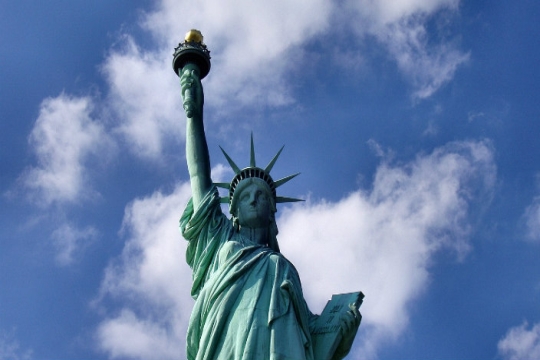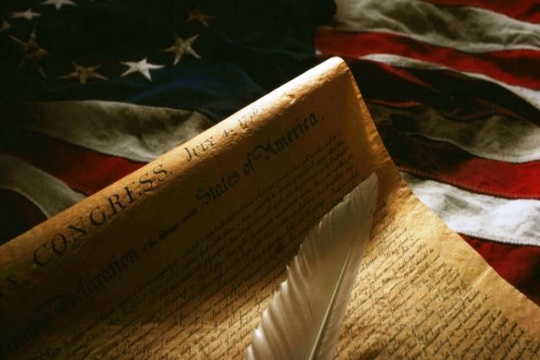Celebrate July Fourth with a frozen hot chocolate to commemorate the Jewish role in Revolutionary-period chocolate in North America!
The warm version of the chocolate beverage became a very popular substitute for politicized tea in the Colonies around the time of the 1773 Boston Tea Party. Successful Sephardi Jewish community leaders, such as the Gomez family members (Manhattan) and Aaron Lopez (Newport, R.I.), participated in this campaign. They were among several North American Jews engaged in the manufacture, retail, and consumption of cacao and chocolate at that time.
Indeed, many of these pioneering Jewish chocolate ventures preceded the beginning of the Baker's Chocolate Company, which has billed itself as "America's Oldest" and "evolved into the first branded 'Baker's Chocolate' product in 1780." Actually, Jewish chocolate trading may be traced back to at least 1701 when the Jew, Isaac Marquez, imported 25 pounds of chocolate in New York.
By the time of the revolution, Aaron Lopez was running 30 trading vessels from Newport, making him the richest resident of Newport. His contribution to the construction of the Touro Synagogue was so substantial that he was honored to lay a cornerstone. Lopez used chocolate at Passover and distributed it as tzedakah, charity. Historian Jacob Rader Marcus described it:
Aaron Lopez … saw food processing as ancillary to his involvement in the coastal and West Indian traffic … The chocolate he secured through outwork was destined for local and North American consumption.
In 1779, Lopez described the revolution’s hardships on his neighbors, noting that though they lacked basic food, at least they had chocolate:
The Jews in particular were suffering due to a scarcity of kosher food. They had not tasted any meat, but once in two months. Fish was not to be had, and they were forced to subsist on chocolate and coffee.
In New York City, five relatives in two generations of the Gomez family enjoyed chocolate connections. The extended Gomez clan led the Sephardi and civic community of New York. At Congregation Shearith Israel, they enjoyed the most prestigious seats. The affluent Gomez family's donation was the highest of any single contribution. The vast majority of the 25 Sephardi members of the board of Shearith Israel were Gomezes.
In particular, Rebecca Gomez stands out, not only for her retail advertising but also as the only known woman to manufacture chocolate in the colonies. Rebecca plied her wholesale and retail chocolate made at the "Chocolate Manufactory" at Ann and Nassau streets in lower Manhattan. When her husband, Mordecai, died in 1750, he left several chocolate accoutrements in his estate inventory, including "16 chocolate cupps [sic], whole and broken, 1 chocolate pott [sic]; 2 boxes Chocolate 50 lbs each and 6 Surnis (840 pounds) Coco [sic] [Surinam]," suggesting that he enjoyed chocolate for both personal and commercial purposes. The Gomez family endeavors in chocolate exemplified the general popularity and availability of chocolate during the period, as well as Sephardi interests in this market.
These eighteenth-century Jewish North American entrepreneurs dipped deeply into the chocolate businesses of their day and relished their chocolate. They contributed to pioneering cacao and chocolate enterprises. This July 4th, join me in raising a frozen hot chocolate to shout out l'chayim to these revolutionary chocoholics.
Decadent Frozen Hot Chocolate
The cinnamon in this recipe percolates the flavors back to the North American colonial period. Makes 2 to 2 1/2 cups, enough for 1 to 8 persons, depending on the size of the portions.
Ingredients
4.5 ounces good quality of your favorite chocolate (dark chocolate is suggested)
2 teaspoons of your preferred hot chocolate mix
1 ½ cups milk
3 cups ice
½ - 1 teaspoon cinnamon
Whipped cream
Chocolate shavings and cinnamonDirections
- Break the chocolate into small pieces and place it in a glass bowl over simmering water, stirring occasionally until melted.
- Add the cocoa, stirring constantly until thoroughly blended. Remove from heat and slowly add ½ cup of the milk and cinnamon. Stir until smooth. Cool to room temperature.
- In a blender, place the remaining cup of milk, the room temperature chocolate mixture, and the ice. Blend on high speed until smooth and the consistency of a frozen daiquiri.
- Pour into a giant goblet and top with whipped cream and chocolate shavings, or divide into smaller glasses for more manageable portions. Top with whipped cream, shavings, and cinnamon.
- Enjoy with a spoon or a straw.
Looking for more Jewish recipes to incorporate into your Fourth of July celebration? Try "18 Recipes for a Jewishly Inspired Independence Day Menu."
Related Posts

Practicing Democracy

Freedom and the Fourth of July: What Does Judaism Say About Independence?

